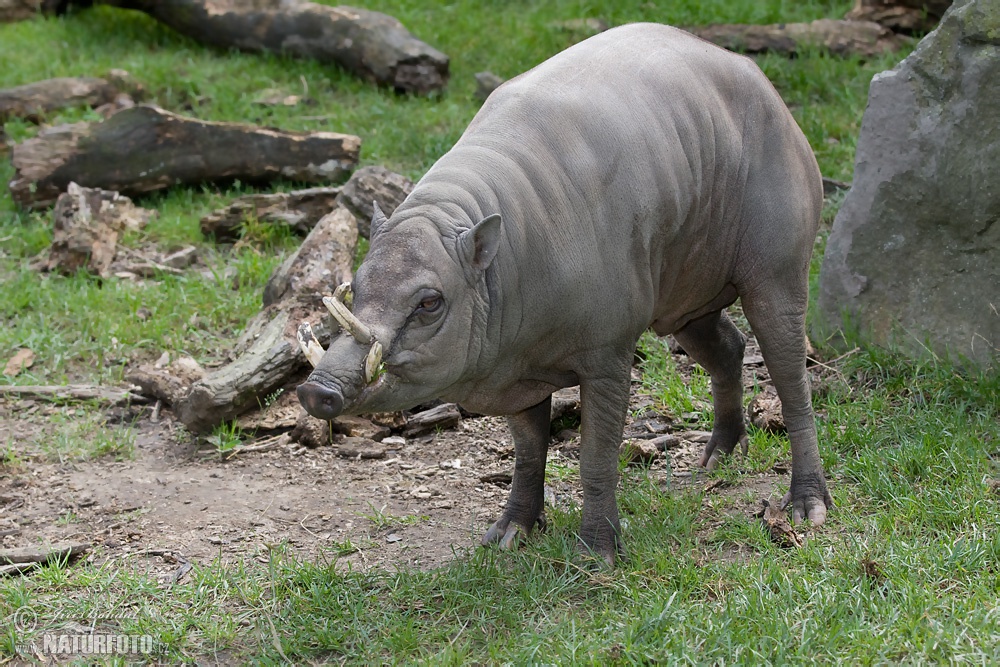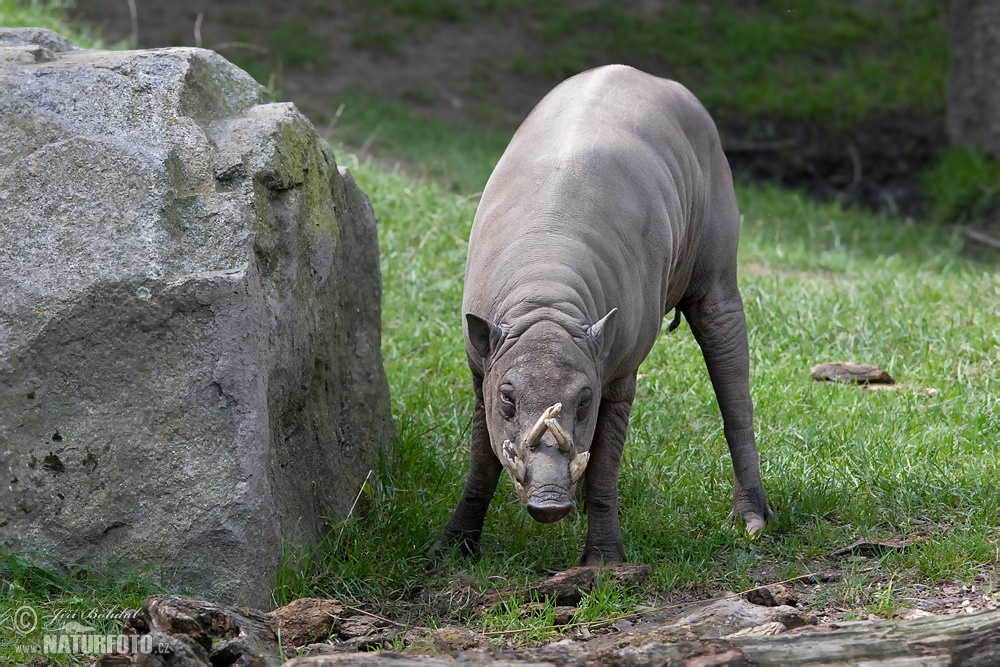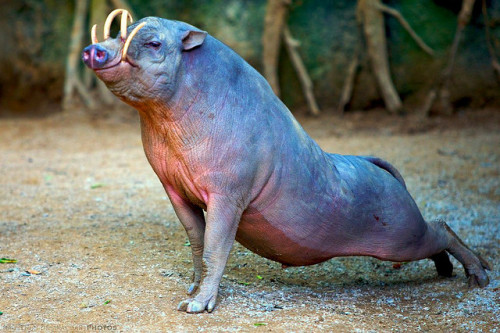Buru babirusa
The Moluccan Hirscheber ( Babyrousa babyrussa ) is a type of Hirscheber ( genus Babyrousa ) that is found exclusively on the Indonesian Sula Islands Mangole and Taliabu as well as on the island of Buru today. Historically, the distribution area also included the island of Sulawesi, where the species is now extinct.
Features
The different types of Hirscheber morphologically do not differ significantly. The animals reach a head -body length 85-110 cm, a shoulder height of 65 to 80 inches and a tail length of 20 to 32 inches. They have a rounded body with relatively long and thin legs. The coat of the Molucca Hirschebers is comparatively long and dense, while the other two extant species are nearly hairless. In further contrast, the coat of the Molucca Hirschebers is golden - cream colored or black, while rough and brown gray and the Togian Hirscheber (B. togeanensis ) brown to black is the Sulawesi Hirscheber (B. celebensis ) with a lighter belly.
The most striking feature of the Hirscheber are the well-developed tusks of the males. The upper canine teeth do not grow in the oral cavity but directly through the snout to the top where they writhe above the muzzle back towards forehead. They reach a length of up to 30 centimeters. In females, these teeth are rudimentary or absent. The lower canines also grow out of the mouth and the sides of the muzzle upward past.
Distribution and habitat
The Moluccan Hirscheber is now distributed solely to the belonging to the Moluccas Indonesian Sula Islands Mangole and Taliabu as well as on the island of Buru.
Historically, the distribution area also included the island of Sulawesi, where the species is now extinct. It is assumed that the animals were introduced to the islands of present distribution area, the actual historical distribution is unknown.
The Hirscheber live in tropical rain forests on the banks of rivers and ponds that are rich in aquatic plants.
Way of life
Over the life of the Molucca Hirschebers are few concrete details. It is believed that they are only slightly different from the way of life of Sulawesi Hirschebers.
Hirscheber are omnivores ( omnivorous ) and feed on different plant parts such as leaves, roots and fruits as well as from animal food such as invertebrates (insects, worms) and small vertebrates. Probably they are looking selectively for food, which they, unlike other pig -like probably not so much digging in the ground, because they lack the reinforcement of the nose by the Rostralknochen. They probably dig especially in loose sand and muddy ground. The animals in Sulawesi also visit areas with volcanic salt deposits there, drink water and eat the soil. It is likely that this also occurs in Babyrousa babyrussa.
Probably the Molucca Hirscheber forming smaller groups that are traveling together. When Sulawesi Hirscheber older males were frequently observed alone while groups usually consist of a maximum of five animals, usually females with several young animals exist. However, troops of up to 13 animals were observed at water points and other venues.
System
The Moluccan Hirscheber is associated with three other species of the genus of Hirscheber.
These four species were originally considered a single species and since 2001/2002 as a separate species B. celebensis, B. togeanensis, B. and B. babyrussa considered bolabatuensis. It is unclear whether the animals are not closely related to the Molucca Hirscheber from the islands of Sulawesi, Muna, Buton and Lembeh that are currently assigned to the Sulawesi Hirscheber.
Threat and protection
The species is classified as threatened ( vulnerable ) by the International Union for Conservation of Nature and Natural Resources (IUCN ) due to the stock size. This classification is justified due to the very small distribution area, which is limited to the Sula Islands and Buru. In addition, the stocks held in recent years, primarily due to habitat loss through logging and landscape transformations as well as by hunting by non-Muslim parts of the population. It is expected that this trend will continue.
The actual status of the populations is unknown, one assumes, however, that the animals are largely undisturbed, especially in the remaining forest stands on Buru and Taliabu.










